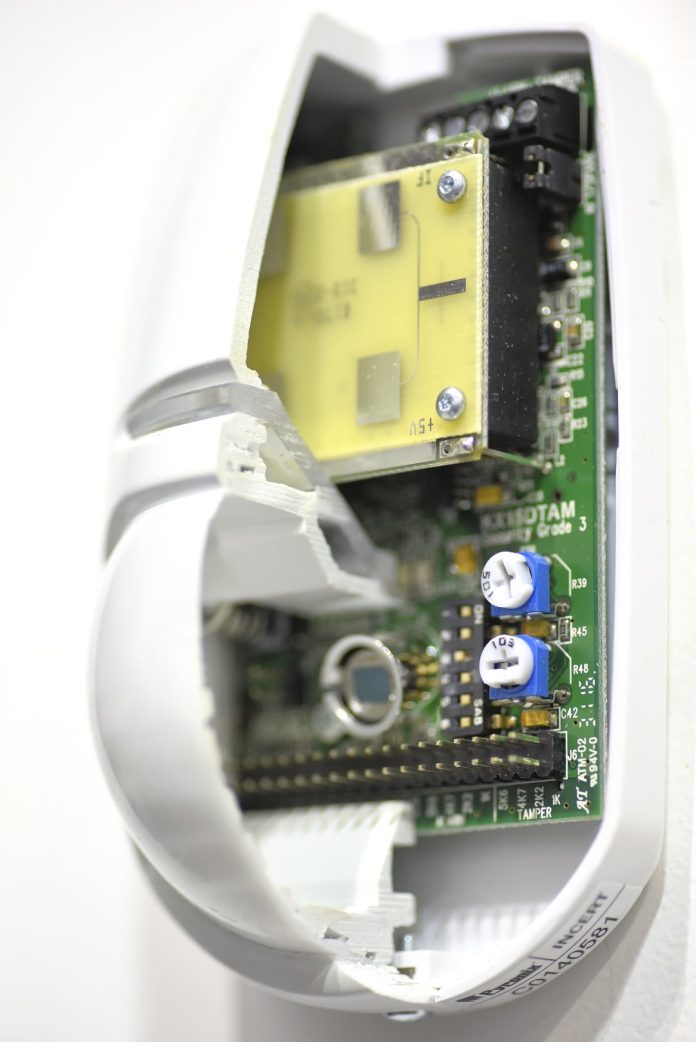When it comes to more challenging environments most installation teams go for dual technology sensors. They’re tough enough to handle sunlit windows and strong air currents, and they’ll pick up small movements.
All dual technology sensors combine a pair of technologies that are sensitive to 2 different types of disturbance. The thinking behind this is to ensure that each sensor supports the weaknesses of the other to eliminate false alarms.
It works thanks to the nature of each of these 2 sensing technologies. PIR elements sense the level of IRE changing between zones over a set time at a set speed. There aren’t many environmental disturbances that mirror this sort of activity – but heat sources, especially warm air currents, spell trouble for PIRs.
Bear in mind with PIRs that the reflected IRE signals their pyro elements receive are minute. The low signal level means that amplification and filtration processes must be well engineered in order to achieve quality signals and this necessary processing slows response times as well as limiting coverage.
Microwaves work differently. They cover an area with a signal and then pick up variations between the signal sent and the signal reflected back. It’s called the Doppler shift. Microwave sensor technologies offer strong detection performance – they’ll pretty much detect anything that moves.
In terms of dual technology what’s vital is that PIRs are sensitive to movement across their zones, while microwave devices activate if they pick up a Doppler shift that moves either towards the sensor or away. Another consideration with dual technology gear is that each sensor can be tuned up more than would be possible if a single sensor technology had to stand-alone.
Expect to pay more for a dual technology sensor – there will also be variations in price depending on things like lens design (mirror optic/fresnel), range, signal processing, active IRE and range gating. The usual things apply when it comes to considering the PIR component – go for quad element pyros, creep zones, tamper, mirror lenses, temperature compensation and the rest.
Advantages of Dual Technology Sensors:
* Lower false alarm rate if environment changes – best choice for tough internal and external applications
* Sensitive to all kinds of motion
* Can be used in hot, windy, changeful sites
* Normally includes features that are only found in the best single-tech sensors
* Sensitive to movement in 2 directions.
Disadvantages of Dual Technology Sensors:
* More expensive than PIRs
* May reduce overall probability of detection compared to PIRs in PIR-perfect internal applications
* Greater complexity means quality control is more important.
#securityelectronicsandnetworks.com








